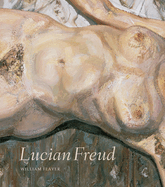Lucian Freud, sometimes called Britain's greatest living painter, relinquished that title yesterday with his death at the age of 88. But it is likely he will continue to be known as one of the finest artists of any age.
Getty Images
'Self-Portrait with a Black Eye' by British artist Lucian Freud who died last night
The grandson of psychoanalyst Sigmund Freud and brother of late comedian, Clement, he died at his home in London after a short illness.
Such was the profound and divisive influence of his highly textural depictions of lumpy flesh, even in his advanced years he single-handedly ensured that portraiture could never be accused of being an obsolete, conservative or dying art.
His realist work was thought by some to be too disturbing to be enjoyed. But his pictures became instantly recognisable even to those who rarely step into an art gallery.
His style was perhaps best epitomised by Benefits Supervisor Sleeping, a nude portrait of an obese civil servant lying on a sofa. Its sale at Christie's in New York in 2008 to Roman Abramovich, the Russian billionaire owner of Chelsea Football Club, set a world record for the highest fee paid for the work of a living artist.
The picture was dubbed Big Sue in tribute to Freud's model, Sue Tilley, who was quick to correct anyone who called it "Fat Sue".
"The painting took nine months, but that was about two or three days a week," she told the BBC shortly before the painting's sale.
"When I started, I got £20 a day. I don't mind though. The best thing was I got lovely lunches. I got taken to the River Café most weekends. It was worth it for that."
The painting was unflattering to say the least, but then Freud was not one to hold back in self-portraits either, emphasising wrinkles and layers of fat to just the same extent as his predecessors of centuries past attempted to gloss over them. "I want paint to work as flesh, my portraits to be of the people, not like them," he once said.
"As far as I am concerned, the paint is the person. I want it to work for me just as flesh does."
It was the critical reaction to the unveiling of his portrait of the Queen in 2001 that really secured his position in art's pantheon.
The then head of the National Portrait Gallery, Charles Saumarez Smith, described it as "thought provoking and psychologically penetrating". Others suggested he should be sent to the Tower of London for treason. Among his other models were Kate Moss and Jerry Hall, who posed naked for Freud when she was eight months pregnant.
Sir Nicholas Serota, director of the Tate galleries, said: "The vitality of his nudes, the intensity of the still-life paintings and the presence of his portraits of family and friends guarantee Lucian Freud a unique place in the pantheon of late-20th-century art. His early paintings redefined British art and his later works stand in comparison with the great figurative painters of any period."
Freud was born in Germany in 1922 but came to England in 1933 when his family fled the Nazis. He enlisted with the merchant navy during the Second World War, but was swiftly discharged after a serious bout of tonsillitis.
After the war it was a trio of paintings of his first wife Kitty Garman that established his career, though their divorce was not thought to have been caused by his masterful and uncompromising eye for the unaesthetically pleasing.
©independent.co.uk






No comments:
Post a Comment
Note: Only a member of this blog may post a comment.